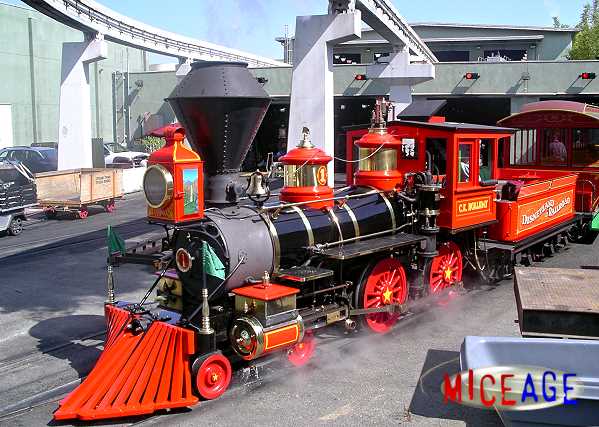I needed to figure out if my design will make all the turns on the DLR line.
A discussion on Burnsland figured out that the sharpest curve on the DLR main line is 278′. But the absolute sharpest turn is actually at the roundhouse switching track. Here’s the #1 on this track entering the main line on one morning.

I don’t know what that particular radius is, but just for fun I assumed that it’s half of the smallest turn on the mainline, or 139′.
Figuring out the turning radius for a vehicle is actually not a completely straightforward task. A lot of different geometries can define the final turning radius. Since I’m just doing a verification of my own design, I just made up a fairly simple one.
Since there are 4 wheels on each rail, when going around a curve, each wheel can be approximated as a point on a curve. Connecting these points describes an arc, which we can then get its radius.
There is “play” with these points also because the wheels have thickness to them. (Technically, the driver wheels cannot deflect because they are rigid in the frames). In the above picture, I deflected the pilot truck until the rear wheel is near but not in contact with the inner crosshead guide. Then I draw an arc connecting the 4 wheels together.
This process gives an arc of about 1350″, or 112′, which is less than my assumed smallest curve of 139′, and certainly much less than 278′ on the mainline.
So indeed, there’s plenty of room for the pilot truck to turn. Generally, rail curves are made to be as large as possible, so in reality the pilot truck does not swing that much.
